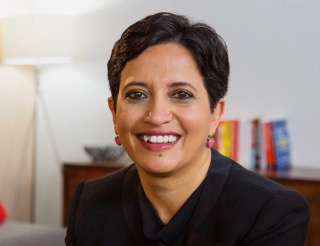1Mby1M Virtual Accelerator AI Investor Forum: JP Persico, shuckerVC (Part 2)
Sramana Mitra: What size checks do you write at pre-seed and seed, and what proof points do you look for?
JP Persico: At pre-seed, we focus more on the technology and the team. Who’s the team? Is there a single CEO or co-founders? What industry are they targeting? What kind of software are they building? We look for early indicators of product-market fit, though not full product-market fit yet.
At the seed stage, we assess product velocity. We follow startups over a 4–6 week process to evaluate how quickly they can build their product and features, and what signals they’re getting from customers.
Our check size ranges from $100,000 to $500,000, depending on whether it’s pre-seed or seed.
Sramana Mitra: Within B2B software, are you mostly investing in AI?
JP Persico: It’s hard to avoid AI, especially in the Bay Area. Yes, we do invest in AI, but we care about how it’s used. The AI must be deeply embedded into the experience—ideally hidden from the user, with a seamless UI. We don’t favor simple chat or prompt-based integrations.
We have a thesis that AI is the gateway to the next generation of GUI. We believe the mouse and keyboard era may be ending. Future interfaces will shift as AI begins to predict and prescribe user actions. So we’re drawn to companies that can integrate AI into the user experience in an invisible but meaningful way.
Sramana Mitra: Let’s talk about some of your portfolio companies. How did you meet them, what stage were they at, and what made you invest?
JP Persico: Our first company was Algorized, founded by Natalya. We met them through our network. It was a seed-stage company raising $2.5 million with a three-person team—CEO plus two engineers.
We were impressed by the technology, which had a strong moat. It was not just because it was patented, but because of what it could actually do. They built edge AI software that runs on sensors—radar, Wi-Fi modules, ultra-wideband sensors. The software enhances what these sensors can “see.” For example, it can detect heart and breathing rates through walls and identify people’s location, size, and movement.
Their initial use case was for cars. Starting in 2026, regulations will require cars to detect human life inside, to prevent tragedies like infants dying in overheated vehicles. Current solutions include pressure sensors in seats or cameras, but these can be fooled by objects like boxes or dolls.
Natalya’s solution can detect vital signs directly, making it far more reliable. That alone was a strong use case, but we also saw broader potential in healthcare, manufacturing, and especially robotics.
In robotics, the problem today is that cameras, LiDAR, and radar can tell you that an object exists, but not whether it’s alive, human, or another robot. Natalya’s software adds that missing layer of understanding—whether something is alive, moving, and how.
This opens up the potential for humans and robots to work side-by-side without safety fences in environments like factories. That’s a significant shift, and we saw a huge opportunity in enabling that future.
Sramana Mitra: How much of this was in place when you wrote the check?
JP Persico: The code was in place. The business model was not. She didn’t know how to sell it. She had a lot of interest from chip manufacturers but didn’t know how to price it. The technology worked.
When we write a seed check, we bring one person into the company to handle HR, finance, marketing, recruiting, and accounting—everything except product and engineering. Natalia wanted shucker on her cap table because of that. She said, “I’m a third-time founder. I don’t want to hire a marketing or HR person. I just need more engineers.” She had 17 VCs bidding to be on the cap table, including Amazon. We were one of them.
This segment is part 2 in the series : 1Mby1M Virtual Accelerator AI Investor Forum: JP Persico, shuckerVC
1 2
Featured Videos
Can 1M/1M Help Me Raise Money?
How Does 1M/1M Democratize Entrepreneurship Education?
How Does 1M/1M Democratize Management Consulting?
When Is The Right Time To Join 1M/1M?
Can 1M/1M Help Me With Business Development?
Can 1M/1M Help Me With Market Sizing?
Can 1M/1M Help Me Validate My Product?
Will I Have Private 1-on-1 Sessions In 1M/1M?
How Does 1M/1M Help Entrepreneurs Connect With Silicon Valley?
Mentoring or Consulting?
Why Does 1M/1M Charge $1000 a Year?
Why Does 1M/1M Partner With Local Organizations?
Why Don\’t Mentoring Networks Work?
Why Is It Important To Study With 1M/1M Now?
Dan Stewart Story
Vikrant Mathur Story
